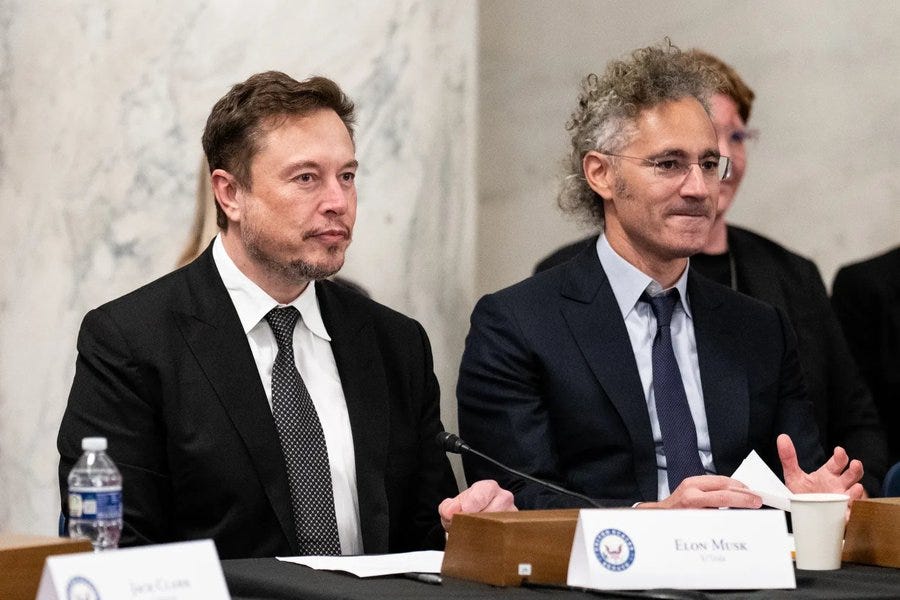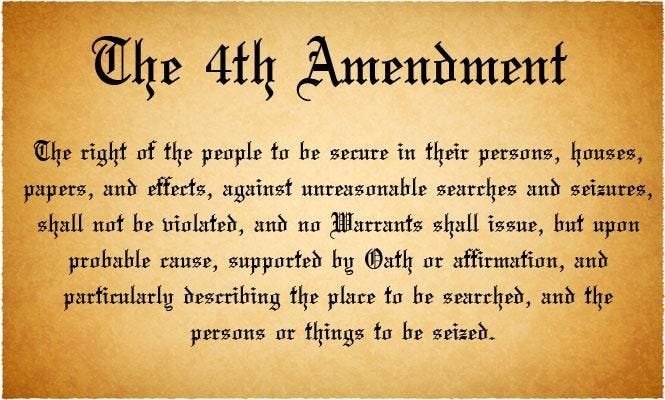The Surveillance State Is Here — Why NYT’s Concern About Trump Is Too Little, Too Late
By Sundance
The New York Times (think DHS embeds) are not concerned about the building of a surveillance state using cross-reference artificial intelligence systems into various government agencies; no, the New York Times (think DHS embeds) are concerned it is President Trump triggering the building of the process, and the parameters therein.
I have outlined this seemingly inevitable construct with great granular detail, that is creating the surveillance state for almost a year. Culminating in a December 2024 recap [SEE HERE] along with my position in January of this year [SEE HERE]. I do not like it, but I understand the arguments behind it.
[New York Times] – In March, President Trump signed an executive order calling for the federal government to share data across agencies, raising questions over whether he might compile a master list of personal information on Americans that could give him untold surveillance power.
Mr. Trump has not publicly talked about the effort since. But behind the scenes, officials have quietly put technological building blocks into place to enable his plan. In particular, they have turned to one company: Palantir, the data analysis and technology firm.
The Trump administration has expanded Palantir’s work across the federal government in recent months. The company has received more than $113 million in federal government spending since Mr. Trump took office, according to public records, including additional funds from existing contracts as well as new contracts with the Department of Homeland Security and the Pentagon. (This does not include a $795 million contract that the Department of Defense awarded the company last week, which has not been spent.)
Representatives of Palantir are also speaking to at least two other agencies — the Social Security Administration and the Internal Revenue Service — about buying its technology, according to six government officials and Palantir employees with knowledge of the discussions.
The push has put a key Palantir product called Foundry into at least four federal agencies, including D.H.S. and the Health and Human Services Department. Widely adopting Foundry, which organizes and analyzes data, paves the way for Mr. Trump to easily merge information from different agencies, the government officials said.
Creating detailed portraits of Americans based on government data is not just a pipe dream. The Trump administration has already sought access to hundreds of data points on citizens and others through government databases.
[…] Palantir’s selection as a chief vendor for the project was driven by Elon Musk’s Department of Government Efficiency, according to the government officials. At least three DOGE members formerly worked at Palantir, while two others had worked at companies funded by Peter Thiel, an investor and a founder of Palantir. (read more)
Every element of the U.S. surveillance state is contingent upon selling the ‘security’ message. With a comprehensive and interconnected database of identity for all Americans: •it makes illegal alien captures and deportations more efficient; •it makes eliminating fraud and abuse in the entitlement programs more substantial; •it can make voting more secure, and •it could protect the identity of Americans from theft and exploitation.
Peter Thiel (Palantir), Elon Musk (xAI, SpaceX), Larry Ellison (Oracle), David Sacks and a host of mutually aligned artificial intelligence builders stand to benefit financially from a technologically efficient Surveillance State. Their companies and their AI software products are the targeting tools within the DHS surveillance system itself.
Do not be misled by their ownership of different companies within this construct, they are all mutually allied; factually, they are all friends in the same tech sector.
The tools created by Palantir et al, are multifunctional. They can be used by the Pentagon and CIA for military application, and they can be used by DNI, DHS, FBI and TSA for domestic application.
Just as the Patriot Act redefined “terror threats” to begin sweeping 360 degrees, so too are the tools of the surveillance state designed for both foreign and domestic application.
There is no way to avoid being the target of a weapon once that weapon is created. However, unlike the mutually assured destruction within the nuclear analogy, there will be no threat of mutual application within the surveillance bomb. There are going to be castes or tiers of people not subjected to the outcome of detonation; therein lies my biggest point against it.
There are going to be tiers of people who are not subjected to the rules of the Surveillance State. There are going to be tiers of people, powerful, influential, some intensely rich people, to whom the application of the surveillance does not exist.
I have already seen this ‘tiered’ system starting to come into place. I have witnessed firsthand the outcomes of the software being deployed within the design of their building.
I have witnessed real identities masked by the system as an outcome of their status. Facial recognition programs that black out search results based on arbitrary definitions and determinations of those who control the surveillance application.
Inside the surveillance system, supported by the policy team behind President Trump, there will be classes of people. Just as we defined “essential workers” within the COVID-19 pandemic.
This essential group will be classed based on their administrative value to the government operators who control the mechanics of outcomes; perhaps “essential administrators.” This is a natural outcome of the mindset behind “continuity of government,” the baseline for the Patriot Act creation.
I have traveled throughout the East and West to gain perspective on what makes us different; what makes Americans different. What I can assert with clarity is that if we lose the Liberty argument then the ideological representatives behind Barack Obama will have succeeded, the fundamental transformation will be irreversible.
While the Declaration of Independence is long regarded as the greatest written declaration of purpose, the latter created Bill of Rights, the first Ten original amendments to the U.S. Constitution, is just as important.
The first declared our intent; the second defined how our founders intended to retain the intent during our collective assembly. Together they outline what set the course to make America great.
This frames the cornerstone of my viewpoints on all of the characters in politics. It is not a matter of debate that on these core issues of Liberty and the concerns around the Surveillance State will impact us all. Everything else is a downstream consequence.
If the system is unavoidable, then what underpins my opposition? Well, the tiered system of constitutional protections only for particular categories of personage must be rebuked.
On this matter there cannot be compromise, because every outcome that impedes our way of life is a derivative of this value, “all men are created equal.”
What is the value of national security, when the liberty that secures the values of America is destroyed in the process? Either the Fourth Amendment means something, or it does not!






